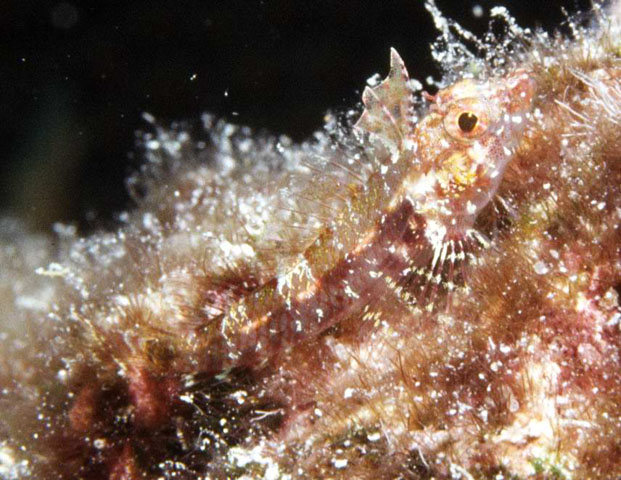| Tripterygiidae (Triplefin blennies), subfamily: Tripterygiinae |
| 3.3 cm TL (male/unsexed) |
|
reef-associated; marine; depth range 1 - 15 m |
| Western Atlantic: Cuba (Ref. 26340) and the Bahamas. |
|
Dorsal spines (total): 13-16; Dorsal soft rays (total): 7-10; Anal soft rays: 16-16. Common amongst Tripterygiids: small, slender fishes. Cirri often present on top of eye and on rim of anterior nostril. Upper and lower jaws each with broad band of conical teeth. Three well-defined dorsal fins; first with 3 spines, second with 10 to 13 spines, third with 7 to 10 segmented rays; last dorsal-fin spine and first segmented ray borne on separate pterygiophores. Caudal fin with 13 segmented rays, 9 of which are branched; pelvic fin with 2 simple segmented rays and 1 embedded spine, inserted anterior to pectoral-fin base. Ctenoid scales on body; pectoral-fin base and belly naked or covered with cycloid scales. Lateral line interrupted at midbody, anterior lateral-line scales pored, posterior scales notched. Body coloration: brown or black bars on a pale (often red) background. Species distinguished by: pectoral-fin base and belly without scales; no enlarged scales on dorsum or in pectoral-fin axil; segmented anal-fin rays usually 16; pored lateral-line scales 11 to 13 (Ref.52855). |
| Adults inhabit patch reefs surrounded by white sand bottom (Ref. 5521). Eggs are hemispherical and covered with numerous sticky threads that anchor them in the algae on the nesting sites (Ref. 240). Larvae are planktonic which occur primarily in shallow, nearshore waters (Ref. 94114). |
|
Least Concern (LC); Date assessed: 03 May 2010 Ref. (130435)
|
| harmless |
Source and more info: www.fishbase.org. For personal, classroom, and other internal use only. Not for publication.

